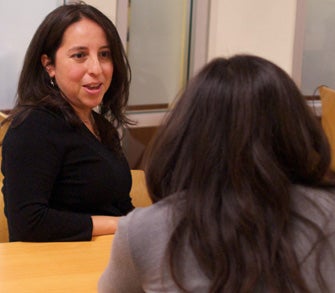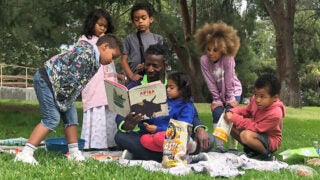Study to explore gang life’s long-term effects on Hispanic women
USC researchers to study experiences of women first interviewed 15 years ago
As teenage girls, they were enmeshed in the dangerous world of gangs in some of San Antonio’s rougher neighborhoods. Now, some 15 years later, what effect has that experience had on the lives of these young Hispanic women?
Researchers at the USC School of Social Work will explore that question in a new $3 million study funded by the National Institute on Drug Abuse.

Led by Alice Cepeda, an associate professor and principal investigator of the project, the research team will examine how intimate partner violence, drug use and other forms of trauma have affected the physical and mental health of 300 women who were affiliated with male gang members during their adolescence.
“We know that trauma like partner violence has been associated with depression and anxiety, but we don’t know the extent of the consequences for women who experience chronic, long-term exposure to this victimization,” Cepeda said.
She first became aware of this unique group of gang-affiliated girls as an undergraduate research assistant studying the risks of gang involvement among adolescent Hispanic boys as part of a project led by Avelardo Valdez, then a faculty member at the University of Texas at San Antonio and now a professor with the USC School of Social Work.
At that time, most research on gangs had focused on men or adolescent boys, Valdez said. The few studies on women involved in the gang lifestyle also centered on full-fledged gang members rather than affiliates.
“These gangs were embedded in the community in family-based networks,” he said. “They drew girls in those communities into their networks — girlfriends, sisters, neighbors and schoolmates. These girls were being exposed to the same kinds of risk behaviors.”
In particular, many of these girls experienced intimate partner violence, engaged in criminal or delinquent behavior, had histories of childhood trauma and used various illicit substances. At an average age of 16, about 30 percent of study participants were teen mothers.
Business as usual
In her master’s thesis, “Homegirls and Chicks: High-Risk Mexican American Gang Associated Females,” Cepeda noted that these young women seemed to accept their circumstances as a normal part of life in their communities.
“Many of these girls are unaware of their susceptibility to these high-risk behaviors, often times accepting them as part of their social reality,” she wrote. “In many instances, these girls are simply seeking acceptance, love, respect and prestige.”
Now nearly a decade and a half later, preliminary interviews with a subset of these women have indicated they are still facing challenges. Of 32 women who participated in the original study and were recently contacted, Cepeda said 64 percent reported recent intimate partner violence, 63 percent had been incarcerated, and approximately 50 percent reported being unemployed.
Cepeda and her fellow researchers, including Valdez and Hortensia Amaro, Dean’s Professor of Social Work and Preventive Medicine and associate vice provost for community research initiatives, are interested in how experiences during adolescence may have contributed to negative life trajectories among these women.
They will explore rates of obesity, prediabetes, sexually transmitted infections, cardiovascular and metabolic dysregulation and other health problems. The research team also plans to examine mental health factors such as depression, post-traumatic stress disorder, anxiety and stress.
“Hopefully, we will also be able to identify factors that led some of these women to lead more conventional lives,” Valdez said. “That’s the payoff of this research.”
Reaching out
Although it has been more than a decade since the research team has interacted with participants from the original study, Cepeda said she is confident that they will be able to reconnect with many of the women, who are now in their early 30s.
During a previous follow-up study with men, they located and interviewed 122 of 160 original participants.



